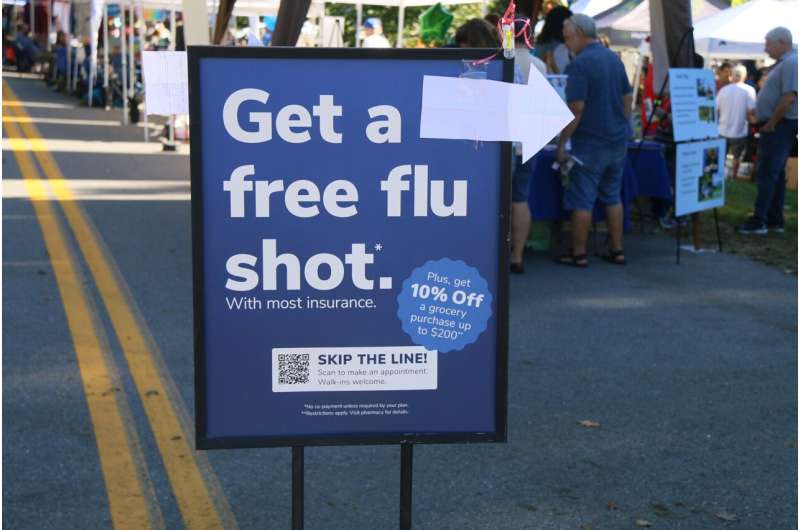
With a small number of influenza cases already circulating in Houston, experts at Baylor College of Medicine are saying now is the time to get vaccinated against the flu. Dr. Pedro Piedra, professor of molecular virology and microbiology and of pediatrics at Baylor, tells us what we can expect this flu season.
“It surprises me to see flu cases already because we’re just in early September and normally we start to see flu a little bit later,” Piedra said. “I don’t know if this is an early sign about what is in store this flu season, but it is a sign that we need to put vaccines on our horizon.”
According to Piedra, we have more diversity in flu vaccines than ever before. All influenza vaccines available in the U.S. this year will be quadrivalent vaccines containing two strains of influenza A (H3N2 and H1N1) and two strains of influenza B (B Victoria and B Yamagata).
The live attenuated nasal influenza vaccine, FluMist, is available for healthy adults and children between the ages of two and 49. For those six months to 65 years of age, there is a variety of inactivated flu shots available through different manufacturers. For individuals over the age of 65, vaccines with higher antigen content or an adjuvant are available, as older adults need a slightly more potent vaccine to protect against influenza. Pregnant women can get the inactivated flu shot at any stage of their pregnancy and are encouraged to get vaccinated to protect themselves as well as their infant during the early months of life.
Now is the time for all individuals over six months of age without any known risk factors that would be a contraindication against the influenza vaccine to get vaccinated, Piedra said.
While in the past experts have recommended getting vaccinated against the flu closer to October or November since the flu season usually peaks in January or February, the influenza season is no longer as predictable as it previously was, which is why experts now encourage vaccination earlier in the fall. There also is an improved vaccine for older adults that results in a more robust immune response that will carry protection for longer, which was previously a concern for vaccinating earlier in that age group.
It is possible to get the influenza vaccine and the new bivalent COVID booster at the same time. The COVID bivalent booster vaccine can be taken three months after COVID infection or two months after the last booster.
There are many questions about why the flu vaccine is an annual vaccine while the COVID vaccine has included more frequent boosters. Piedra said that’s because the influenza virus changes every season, and the vaccine is updated annually to try to most closely match the virus that is expected to circulate that flu season, offering protection against deaths, hospitalizations and emergency room visits. Because we are still learning about COVID-19 and how the virus mutates, there has been a need for boosters to provide continued protection throughout the year. Now that a bivalent omicron-specific booster is available that is closer to what is circulating in the community at this time, experts will observe whether this booster will help provide longer protection and result in annual COVID vaccinations.
In addition to vaccination and the use of antiviral agents, Piedra also emphasized the importance of good respiratory etiquette for all and non-pharmaceutical interventions, which includes wearing masks in crowds, keeping distance, washing hands frequently and coughing into your elbow, to protect against influenza for those at higher risk for complications from the virus.
He also suggests high-risk individuals contact their physician about having antiviral medication at home during the flu season so they can take it as soon as they experience symptoms, since these medications must be taken within two days of symptom onset.
Dipali Pathak, Baylor College of Medicine

